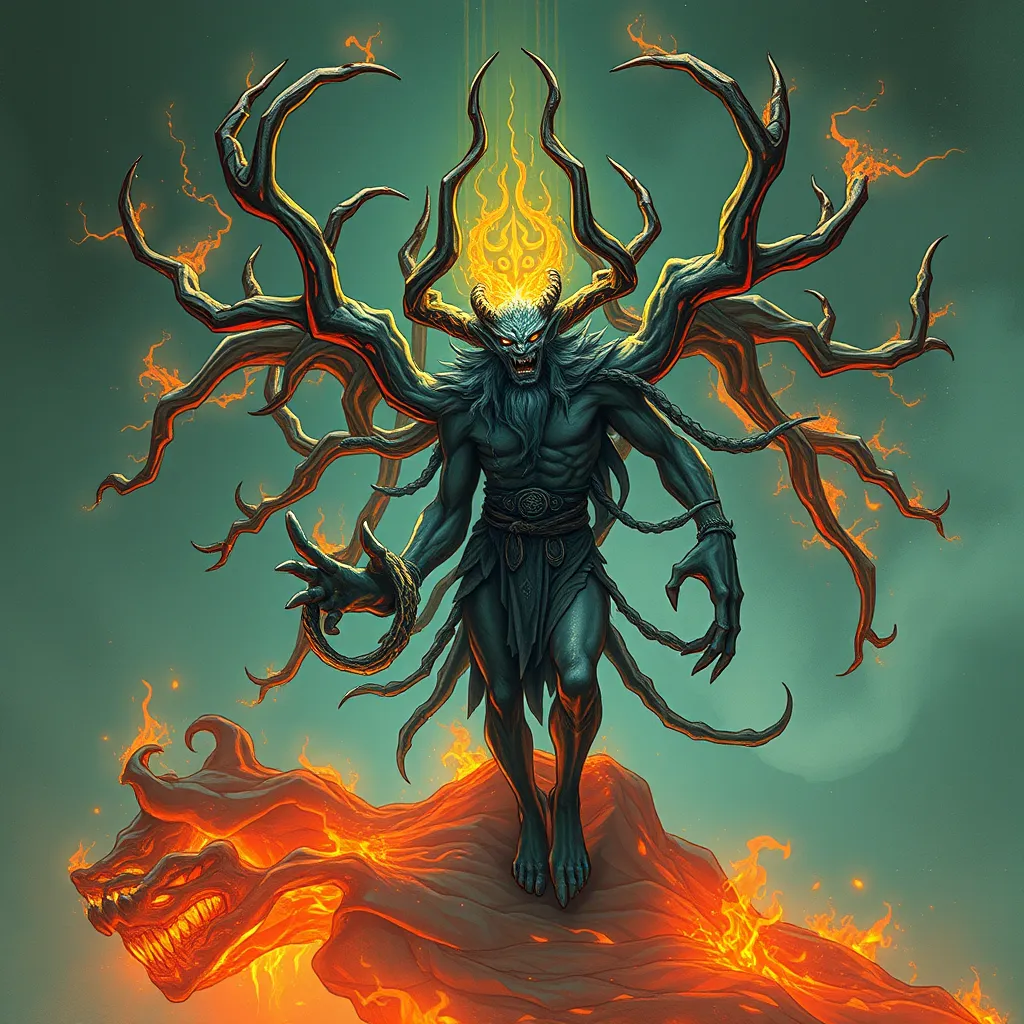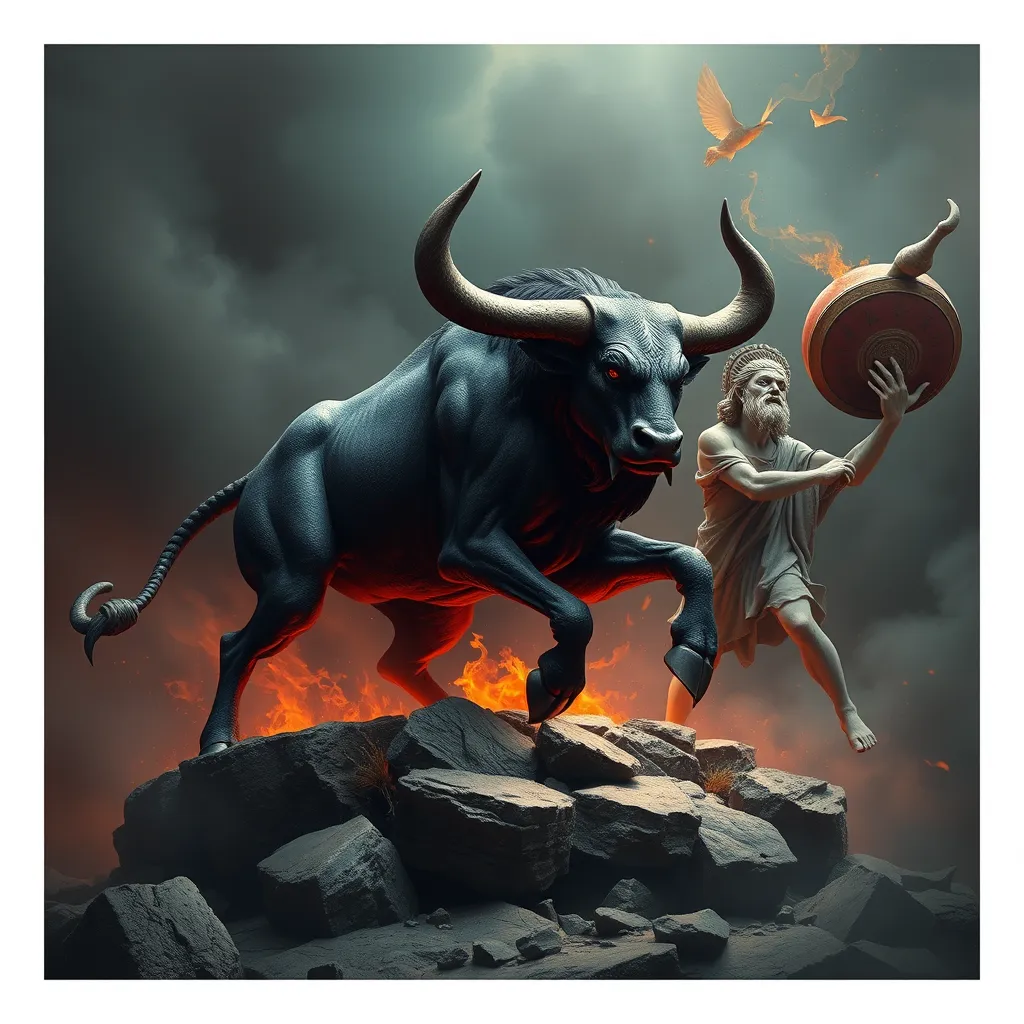The Kraken’s Dance: Exploring the Monster’s Role in Norse Ritual and Ceremony
I. Introduction
The Kraken, a legendary sea monster, has captivated imaginations for centuries, particularly within the context of Norse mythology. This colossal creature, often depicted as a giant octopus or squid, embodies the mysterious and perilous nature of the ocean. In ancient cultures, monsters like the Kraken served significant roles, not just as figures of fear, but as symbols of the unknown and the forces of nature.
This article aims to delve into the Kraken’s role in Norse rituals and ceremonies, exploring how this mythical creature was woven into the fabric of Norse spiritual life and maritime practices.
II. The Mythology of the Kraken
A. Origins and evolution of the Kraken legend
The legend of the Kraken is thought to have originated from ancient seafarers’ accounts of monstrous creatures lurking in the depths of the ocean. These tales were likely inspired by real marine animals, such as giant squids, which could easily evoke fear and awe in those who encountered them.
B. Historical texts and references to the Kraken
Historical references to the Kraken can be found in various texts, including the works of the 18th-century naturalist Francesco Negri and the 19th-century writer Alfred Lord Tennyson. These writings helped perpetuate the image of the Kraken as a fearsome beast that could drag ships and sailors into the abyss.
C. The Kraken as a symbol of chaos and the unknown
The Kraken embodies chaos and the unknown aspects of the sea, representing the dangers of maritime navigation. In Norse mythology, the sea was often viewed as a realm of uncertainty, and the Kraken personified these fears, serving as a reminder of nature’s power and unpredictability.
III. The Kraken in Norse Culture
A. Representation of the Kraken in Norse art and literature
The Kraken and similar sea monsters are depicted in various forms of Norse art, including carvings and tapestries. These representations often highlight the creature’s massive size and terrifying features, solidifying its status as a formidable entity in Norse culture.
B. Comparisons with other mythical creatures in Norse mythology
While the Kraken is a significant figure, it shares the limelight with other mythical creatures in Norse mythology, such as Fenrir, the giant wolf, and Jörmungandr, the Midgard Serpent. Each of these beings represents different aspects of chaos and destruction, but the Kraken’s unique connection to the sea sets it apart.
C. The Kraken’s connection to the sea and maritime life
As a creature of the ocean, the Kraken is intricately linked to Norse maritime life. The sea was essential for sustenance and trade, yet it was also fraught with danger. The Kraken served as a reminder of the ocean’s dual nature: a source of life and a harbinger of death.
IV. Rituals Involving the Kraken
A. Ceremonial practices honoring sea deities
Norse rituals often included offerings to sea deities like Njord, the god of the sea and winds. In some practices, the Kraken was invoked as part of these ceremonies, symbolizing respect for the ocean’s might and mystery.
B. The Kraken’s role in fishing and maritime ceremonies
Fishing was a critical aspect of Norse life, and rituals were performed to ensure safe and successful voyages. The Kraken’s presence in these ceremonies served as both a guardian spirit and a cautionary figure, emphasizing the need for respect toward the ocean.
C. Possible interpretations of Kraken-related rituals
- Rituals may have aimed to appease the Kraken, preventing it from wreaking havoc.
- They could symbolize a communal acknowledgment of the sea’s dangers and the need for cooperation in facing them.
- Some interpretations suggest that Kraken rituals served as rites of passage for sailors, marking their entry into the perilous world of the sea.
V. The Kraken as a Catalyst for Transformation
A. The interplay between fear and reverence in Norse rituals
The Kraken elicited both fear and reverence among seafarers. This duality is reflected in rituals that acknowledged the creature’s power while seeking its favor. Such practices illustrate how the Norse navigated their relationship with the unknown.
B. The Kraken as a symbol of personal and communal transformation
Encounters with the Kraken might symbolize moments of significant change, both personally and communally. The monster’s ability to destroy and transform can represent the trials and tribulations that lead to growth and new beginnings.
C. Stories of transformation inspired by Kraken encounters
Many sagas and tales feature characters whose lives changed dramatically after encounters with sea monsters, including the Kraken. These stories often emphasize resilience, adaptation, and the importance of embracing the unknown.
VI. Modern Interpretations of the Kraken in Ritual
A. The resurgence of Kraken imagery in contemporary culture
In recent years, the Kraken has seen a resurgence in popular culture, appearing in films, literature, and art. This revival speaks to humanity’s enduring fascination with mythical creatures and their symbolic significance.
B. Modern rituals that draw inspiration from Norse practices
Contemporary spiritual practices sometimes incorporate elements inspired by Norse rituals, including those involving the Kraken. These rituals often emphasize a connection to nature and the sea, reflecting a desire to honor ancient traditions.
C. The Kraken’s role in environmental and maritime activism
The Kraken has also become a symbol for environmental causes, particularly those focused on ocean conservation. Activists use the imagery of the Kraken to draw attention to the fragility of marine ecosystems and the threats they face from pollution and climate change.
VII. The Legacy of the Kraken in Norse Rituals
A. The impact of the Kraken on Norse cultural identity
The Kraken has left a profound imprint on Norse cultural identity, serving as a symbol of the sea’s power and the mysteries it holds. Its legacy continues to influence how Norse culture is perceived and celebrated today.
B. Continuities and changes in the portrayal of the Kraken
While the portrayal of the Kraken has evolved over time, its core symbolism remains intact. From ancient rituals to modern interpretations, the Kraken continues to embody the relationship between humanity and the sea.
C. The ongoing fascination with sea monsters in modern spirituality
The allure of sea monsters, like the Kraken, persists in modern spirituality and mythology. These creatures invite exploration of the unknown, encouraging individuals to confront their fears and embrace the mysteries of existence.
VIII. Conclusion
In summary, the Kraken holds a significant place in Norse rituals and ceremonies, representing the complex relationship between humanity and the sea. Its legacy endures in popular culture, reflecting our ongoing fascination with mythical creatures. The exploration of the Kraken’s role in ancient practices reminds us of the importance of these figures in understanding human experience and the natural world.
As we continue to engage with the stories of monsters, like the Kraken, we are invited to reflect on our fears, our reverence for nature, and the transformative power of the unknown.



